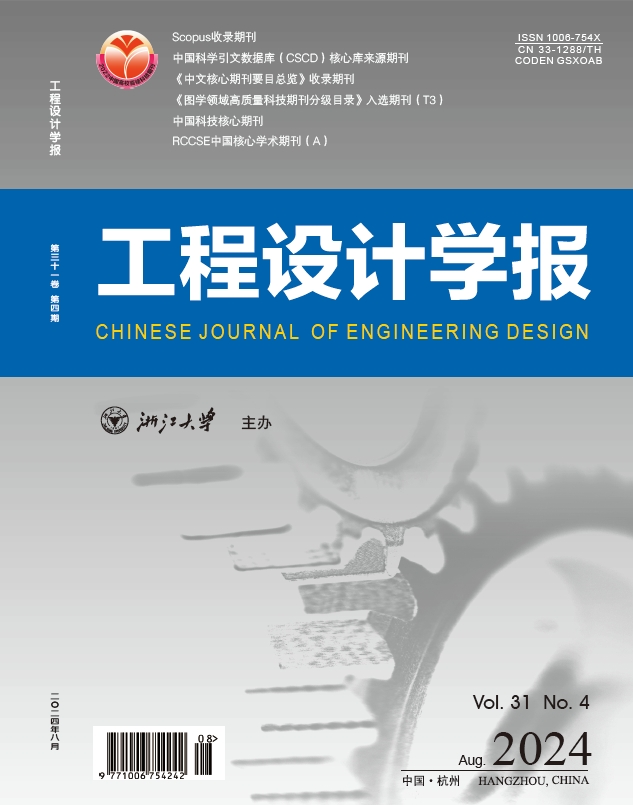Heterogeneous cellular network optimization for green access of IoT traffics
IF 4.5
Q4 Engineering
引用次数: 0
Abstract
The Internet of Things(IoT) has become an essential supporting platform for the present and future cyber-enabled services. Cellular networks is considered as the main channel of the data access for IoT terminals distributed in the region of interest, and they have an irreplaceable value, especially in wide-area coverage. Thus, it has a significant application value to reduce the downlink transmit power consumption of base stations under the restrictions of the coverage requirements for the green communication in heterogeneous cellular networks. A gradient descent algorithm was proposed based on smooth approximation and root mean square propagation. The algorithm could minimize the total downlink power consumption of base stations while satisfying the IoT service coverage. First, the penalty function method was used to simplify such an optimization problem with complicated constraints to a new one with simple constraints. Then, the non-derivative objective function was transformed by an approximation method into a derivable form. We also presented the close-form of the gradient of the objective function with respect to both the azimuths of the antennas installed in the base stations and the downlink transmit power levels related to these antennas. Finally, the gradient descent algorithm with root mean square propagation was used to execute the optimization of the newly approximated but smoothed version of the original objective function. Simulation experiments were conducted, and the results show that the proposed algorithm can significantly reduce the total power consumption of the downlink radio frequency transmit under the restrictions of the coverage ratio requirements in the region of interest. Furthermore, not only is the convergence speed of the proposed algorithm very fast, but also the oscillation phenomenon that occurs during the iterative procedure steps of the optimization is greatly suppressed by the proposed algorithm compared with the meta-heuristic algorithms and ordinary gradient descent method.面向物联网流量绿色接入的异构蜂窝网络优化
物联网(IoT)已成为当前和未来网络服务的重要支撑平台。蜂窝网络被认为是分布在感兴趣区域的物联网终端数据访问的主要通道,具有不可替代的价值,特别是在广域覆盖方面。因此,在异构蜂窝网络绿色通信覆盖要求的限制下,降低基站下行传输功耗具有重要的应用价值。提出了一种基于光滑逼近和均方根传播的梯度下降算法。该算法在满足物联网业务覆盖的前提下,使基站下行总功耗最小。首先,采用罚函数法将复杂约束优化问题简化为具有简单约束的优化问题;然后,用近似方法将非导数目标函数转化为可导形式。我们还给出了目标函数的梯度与安装在基站中的天线的方位角和与这些天线相关的下行传输功率水平的接近形式。最后,采用均方根传播梯度下降算法对原目标函数的新逼近光滑版进行优化。仿真实验结果表明,在限定感兴趣区域覆盖率要求的情况下,该算法能显著降低下行射频发射的总功耗。此外,与元启发式算法和普通梯度下降法相比,该算法不仅收敛速度快,而且大大抑制了优化迭代过程中出现的振荡现象。
本文章由计算机程序翻译,如有差异,请以英文原文为准。
求助全文
约1分钟内获得全文
求助全文
来源期刊

工程设计学报
Engineering-Engineering (miscellaneous)
CiteScore
0.60
自引率
0.00%
发文量
2447
审稿时长
14 weeks
期刊介绍:
Chinese Journal of Engineering Design is a reputable journal published by Zhejiang University Press Co., Ltd. It was founded in December, 1994 as the first internationally cooperative journal in the area of engineering design research. Administrated by the Ministry of Education of China, it is sponsored by both Zhejiang University and Chinese Society of Mechanical Engineering. Zhejiang University Press Co., Ltd. is fully responsible for its bimonthly domestic and oversea publication. Its page is in A4 size. This journal is devoted to reporting most up-to-date achievements of engineering design researches and therefore, to promote the communications of academic researches and their applications to industry. Achievments of great creativity and practicablity are extraordinarily desirable. Aiming at supplying designers, developers and researchers of diversified technical artifacts with valuable references, its content covers all aspects of design theory and methodology, as well as its enabling environment, for instance, creative design, concurrent design, conceptual design, intelligent design, web-based design, reverse engineering design, industrial design, design optimization, tribology, design by biological analogy, virtual reality in design, structural analysis and design, design knowledge representation, design knowledge management, design decision-making systems, etc.
 求助内容:
求助内容: 应助结果提醒方式:
应助结果提醒方式:


